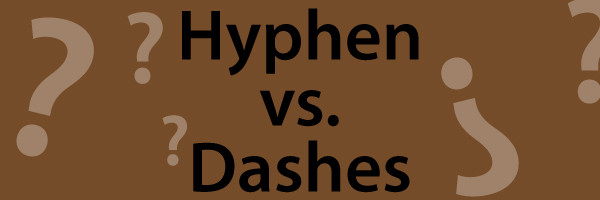I saw this confusing hyphen format used during a local news report regarding the late Arnold Palmer’s age. According to this news station, “Arnold Palmer was 87-years-old”. I thought this looked strange — okay, it looked weird — so I decided to do a little fact-checking.
Turns out it’s weird because it’s not right! According to the Grammar Book, a hyphen between the numeric age, “years” and “old” words is not necessary. Why? The word “years” is plural, which is correct. When you’re writing about the passage of time, if that mention of time is in a plural form, you don’t need to use the hyphen. To my fellow writers and authors: I know we sometimes get a pass for creativity, but I wouldn’t recommend it in this case.
Curious, I decided to look through the rest of the Grammar Book’s rules to find out more about the hyphen.
If it’s not used correctly, the hyphen (or lack thereof) can change the meaning of an entire sentence! For example, straight from the Grammar Book’s website, what does this sentence mean to you: “Springfield has little town charm.” It could mean that Springfield is lacking in charm as a town; further, it could mean people are rude, disengaged, unfriendly, boring, etc..
Could it mean that Springfield has the charm of a little town? Not unless you write the sentence like this: “Springfield has little-town charm.”
See how the hyphen makes that meaning clear? This also works with measurement of numbers, be it time, numbers of people, or money. Numbers from twenty-one (21) to ninety-nine (99) written in word format should be hyphenated. In fact, my editor prefers using the en dash rather than the normal, smaller hyphen because it looks better. As I did further research, I found out that most publishers prefer to use the en dash as well in this case.
Oh, wait! This gets better! Now I’ll ask this: when do you put a space between the hyphen mark? The answer: it depends on how you define “hyphen”. The actual hyphen is the key between the zero (0) and equal sign (=) to the left of the backspace key. The en dash and em dash, however, are not hyphens, but can be confused as such. The purpose of a hyphen is to keep words glued together to complete the intentioned meaning (i.e., twenty-one, ‘little-town charm’, etc.), while the dashes are actual thought interruptors, indicating an abrupt change in thought. Hyphens never have a space befor and after their use, while you can put a space between the dashes and the words they separate.
To find out more about these tricky rules, please click on the website links below:
